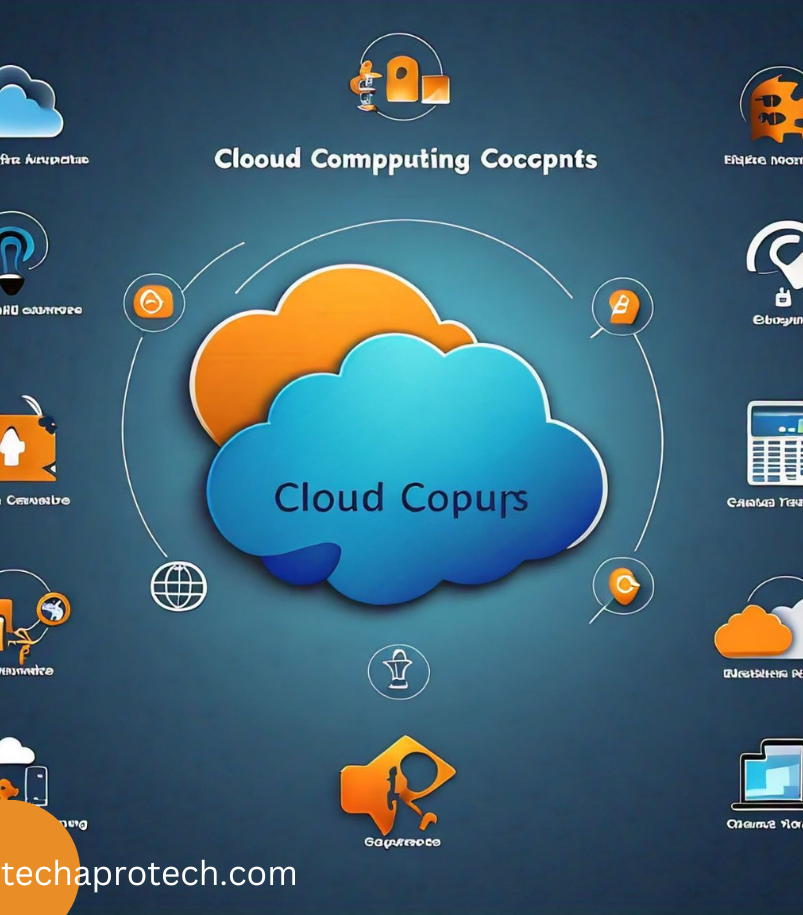Business firms have benefited from the shift towards the cloud, where firms are now offer variable, elastic, and cheap solutions. Whether you are a small business or a big business, going for the cloud helps you cut costs, become more efficient, and focus on your core business. In this article, we will provide a brief insight into what cloud computing is. The features and cloud computing essentials, and also how companies can capitalize on it.
What is cloud computing?
In its simplest form, cloud computing means accessing and using computing resources through the Internet, also known as cloud services. Unlike having their own built-up and self-controlled physical computers or centers, firms lease usage of computing services on demand at any time, without the need for investing in a physical infrastructure.
Cloud computing is divided into three primary categories:
Infrastructure as a Service (IaaS): hosts important computing commodities in the realm of virtual machines, storage, and networking.
Platform as a Service (PaaS): Enables developers to create and deploy applications using models that allow them not to think about the underlying structure.
Software as a Service (SaaS): Provides client software solutions through the web, thus doing away with installation and subsequent updates.
Most important Cloud Computing Concepts

To fully unlock the potential of cloud computing, it’s important to understand several key concepts and cloud computing essentials:
Scalability
The cloud platform comes with almost unlimited scalability. Computation resources can be easily parcel and de-parcel depending on the requirements of the business. This basically shows that no matter whether you are experiencing a huge amount of user traffic to your online business or experiencing very rapid growth, cloud services can make modifications without the need for heavy investment in infrastructure.
On-Demand Service
In cloud computing, the user can start using resources such as data storage or computational power on an on-demand basis. This cuts out the long lead times. This is normally the case when one is sourcing for and putting up hardware. Moreover, consumption-based costing makes businesses use resources only for their utility; the money spend is then control.
Multi-Tenancy and Abstractions
Cloud computing still follows a multi-tenant model; for instance, a number of consumers will share in the same resource. This in a way enables the providers to align resource utilization to their needs while at the same time managing their costs. But the information is safeguard well, with several layers of security measures in place to allow users’ information to be totally unique and safe.
Global Accessibility
Another interesting aspect of cloud computing is that it is available geographically. As long as a user has an internet connexon they can access applications and data from any part of the globe. This has been of immense help in the possibility of working from home and dealing with virtual teams.
Automation and Self-Service
Some of the common cloud computing essentials or services include scaling, monitoring, and backups, and some of these are automatic once the user has signed up to cloud computing essentials or services. Furthermore, self-service options enable users to deploy and allocate resources autonomously and endorse higher efficiency.
Tapping the Value of Cloud Computing
Cloud computing integration unleashes many possibilities that keep organizations relevant in the marketplace. That is why it is now high time to have a look at some of the greatest advantages.
Cost Savings
The one of main cloud computing essentials are known to be the cost advantages. Businesses are not require to spend much money on physical servers or data centers again. In sharp, different cloud computing essentials or services are very cost-effective, as most of the service providers work under the structure of cost recovery. Whereby, one will only be charge for what he or she has consumed.
The damaging implication of this is not hard to deduce. There is less demand for a physical object in terms of both purchase and upkeep. It costs less to make, less to maintain, and less in overall energy required for the equipment to perform its function. Thirdly, it could be noted that many services are available in the cloud. This means that they cost far less than if the business had made the investment originally to purchase the services.
Increased Inter-Disciplinary Contact and Adaptability
One of Cloud computing essentials helps to improve cooperation because most employees and groups can handle files, data, and applications remotely. This comes in handy when your team is disperse across different offices or is now working from home; due to cloud platforms, your team can work in real time. The efficiency is improve through working on documents collaboratively, using tools for communication store in the cloud, and accessing data centrally from a device.
Business Continuity & Disaster Recovery
For the businesses, one of the main issues is to avoid data loss and have less interruption for the disaster. Cloud computing entails impressive backup, data recovery, as well as failover mechanisms since physical structures can always let everyone down. A lot of vendors I discussed have automated backup capabilities. This means data is often backed up and can easily recover, thus cutting down on working time.
Security and Compliance
Security is always a priority for cloud providers. This usually log on to a higher level of security compared to most internal IT departments. Security measures present are use of encryption, user authentication, and security check-ups. In addition, most cloud providers meet industry standards from GDPR, HIPAA, SOC 2, and many other regulations. This allow businesses in regulated industries to confidently use cloud services.
Better adaptability and creativity
Technology benefits in business innovation are drive by enablers such as cloud computing that offer improved capabilities without major capital outlays. Organizations can try out new products and applications, construct faster prototypes, and launch new services. It can be seen how they enable businesses to adapt, innovate, and respond to change much more quickly than their counterparts, thus giving them a competitive edge.
Environmentally Friendly
There is proof that shows cloud computing can help cut down a company’s negative impact on the environment. Cloud service provider clinics adopt energy-efficient data centers, and since several customers share resources by subscription in multi-tenancy, the overall power consumptions are brought to minimal levels. It accords with sustainability strategies and makes it easy for firms to manage their affairs in a way that is environmentally friendly.
Cloud computing challenge
This paper looks at some of the most common challenges experienced in the implementation of cloud computing. While the benefits of cloud computing are extensive, businesses must also be aware of the challenges:
Data Privacy and Control
One of its biggest disadvantages is that companies share their information with another organization when employing cloud services. To the same end, guaranteeing that data is protect and encrypt and make available to only the right personnel is critical. It is very important to select some reliable cloud service providers that meet industry standards and are ready to keep data private.
Maintenance time and service accessibility
Cloud providers in general provide high availability, which means the services they offer can become unavailable sometimes. For any firm getting managed services from a provider, it is very important that one can be sure about the provider and also ensure that one has a backup plan in case of an outage, for instance by having multi-cloud solutions.
Skill Requirements
Cloud adoption and management entail certain unique competencies. Companies may require their IT staff to undergo training or sourcing for some talent and knowledgeable cloud specialists in order to avert possible problems and employ all cloud services efficiently.
Forecast of Cloud Computing
Cloud computing is continuously evolving, with several trends shaping its future:
Edge Computing: Due to the applicability of IoT smart devices, edge computing has emerged in the recent past. It entails operating on data nearer to where it is generate with minimal delay and most minimize use of band width.
Artificial Intelligence (AI) and Machine Learning (ML): Cloud companies have now started providing AI and ML as services. Where businesses can build and run models for achieving superior analytics and automating business functions.
Hybrid Cloud and Multi-Cloud: Organizations are now beginning to use hybrid and multicloud solutions. Where the organization will use both public and private cloud to fulfill different requirements.
Conclusion
Cloud computing is trans-formative in organisations. Since it has numerous cloud computing essentials or advantages and opportunities for organisations, such as cost reduction measures, improvement of operations, and security. This is, the basic concept and utilising its benefits can lead the businesses to a higher level of optimisation, creativity, and probability. Cloud computing is set to be a key enabler of end-user computing as we move into the future business environment.

